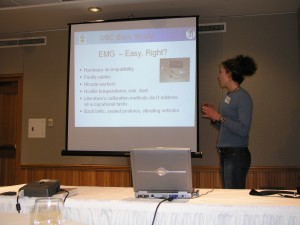
Â
Publishing research articles is important for researchers. It shows that peer reviewers think your work has a high (enough) quality, and it lets people know about the work you have done. It is also really important for getting hired or promoted in academia. Right after I graduated I had a bit of a lull in terms of publishing, so I was looking forward to coming to Sweden as an opportunity to publish more. Happily, I have had that chance and my supervisor has encouraged me to spend some paid time working on my PhD publications, even though they weren’t fully conducted here. To reflect CBF’s support, I will list it as one of my ‘institutional affiliations’ on the article, this way everyone gets to increase their profile a bit when there is a new article.Â
My first research article was very atypical in that it was accepted on the first try with very minor revisions and the reviewers had unanimous gushing support for the topic and how it was written.  This was a nice introduction to scientific publishing, but not at all representative and net really helping to prepare me for the true nature of scientific publishing. Publishing research articles isn’t always easy. Typically you submit an article to a journal, the editor sends it to 2-4 reviewers (experts in the field). The reviewers make recommendations to the editor to reject the paper (ouch), suggest major revisions, accept it with minor revisions, or accept it outright (I have never heard of this, although theoretically possible). The author(s) decide whether they want to make the changes and re-submit it, or submit to a new journal, or quit and become an aerobics instructor (always an option).Â
 Some of my articles have been and forth to the journal so much it feels like playing tennis. The reviewers always seem to want a something a little different. When you re-submit the article, you need to write a polite response describing the changes you have made, or clearly explain why you elected not to take the reviewers advice.  I have gotten good at writting these responses, since all of my articles seem to need 1 or 2 or 11. Usually the reviewers give good advice and it makes the paper better. This kind of peer-review also helps prevent crap articles from being published, so that you can trust the science behind what is out there.  However, articles about crap are important for medicine, so they are still out there.Â
Here are my journal articles so far this year:Â
Trask, C., Teschke, K., Morrison, J., Village, J., Johnson, P., Koehoorn, M. (2010) Predicting Exposure for Mean, 90th Percentile, and Cumulative EMG Activity in Heavy Industry. Annals of Occupational Hygiene.Â
 UPDATE: here is the link to see it online http://dx.doi.org/10.1016/j.ergon.2010.02.006
Trask, C., Teschke, K., Morrison, J., Village, J., Johnson, P., Koehoorn, M. (2010) EMG-Estimated Spinal Compression in Five Heavy Industries. Â International Journal of Industrial Ergonomics. IN PRESSÂ
Trask, C., Teschke, K., Morrison, J., Johnson, P., Koehoorn, M. (2010) Optimizing Sampling Strategies: Components of Low-Back EMG Variability in Five Heavy Industries. Â Accepted for publication in Occupational and Environmental Medicine. IN PRESS

Great work!!! I can totally appreciate the amount of effort, patience and time required to publish what you have so far!! Congratulations! It’s also great to hear that your supervisor is being so supportive.
On a related side note, I was asked last week via email to review an article for the Journal of Agriculture and Food Science. I’m still recovering from their “Thanks, but no thanks” rejection letter :p.